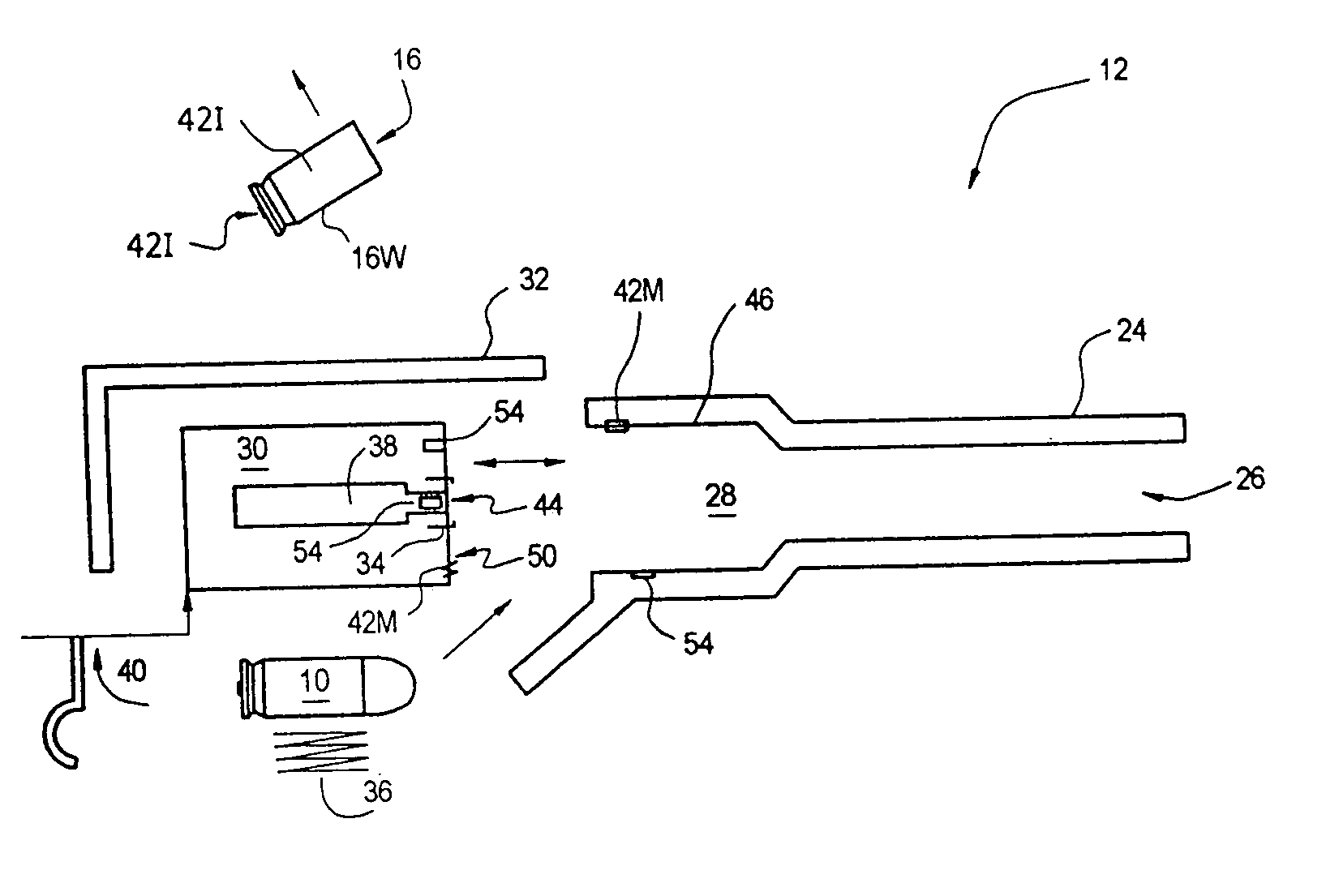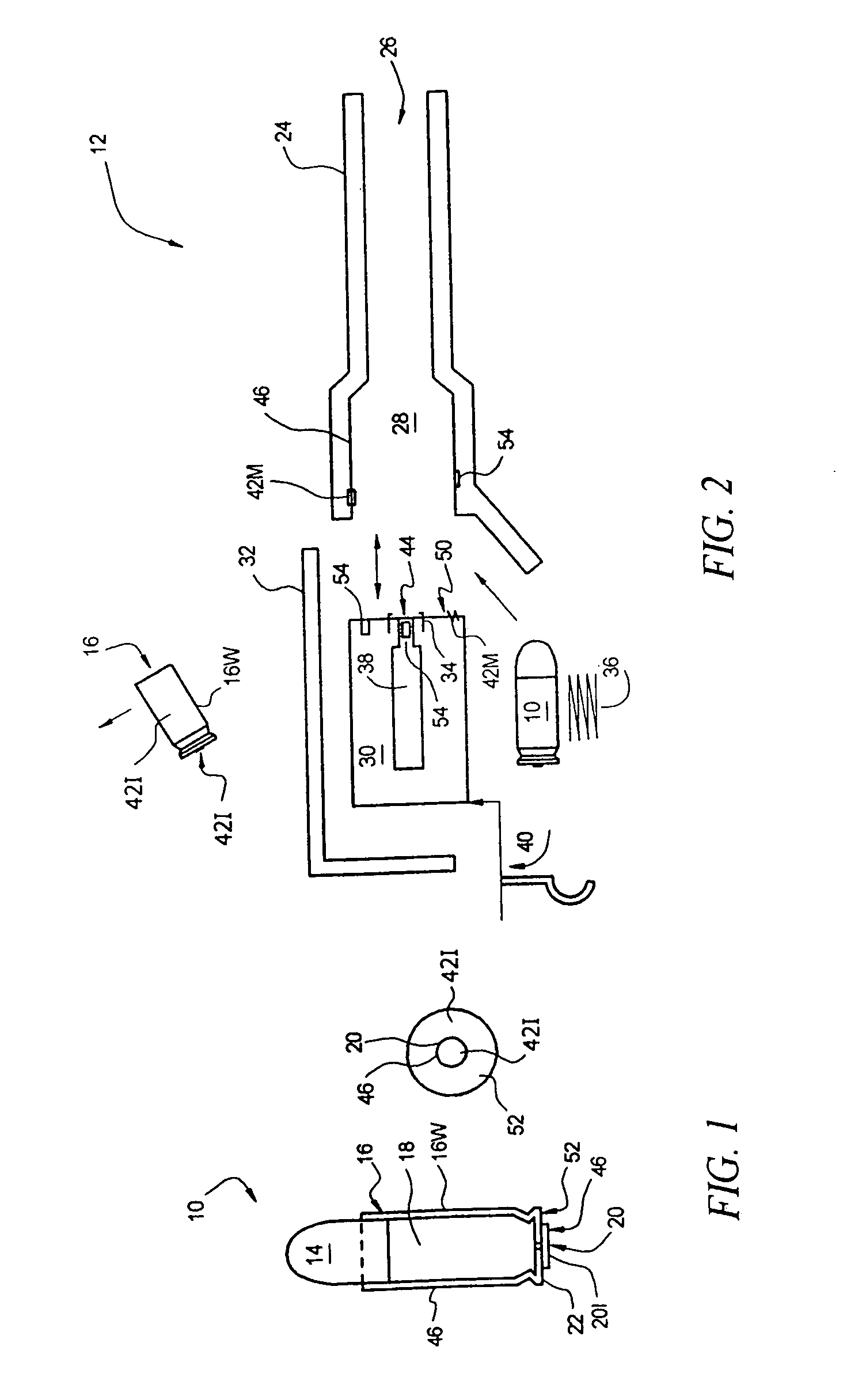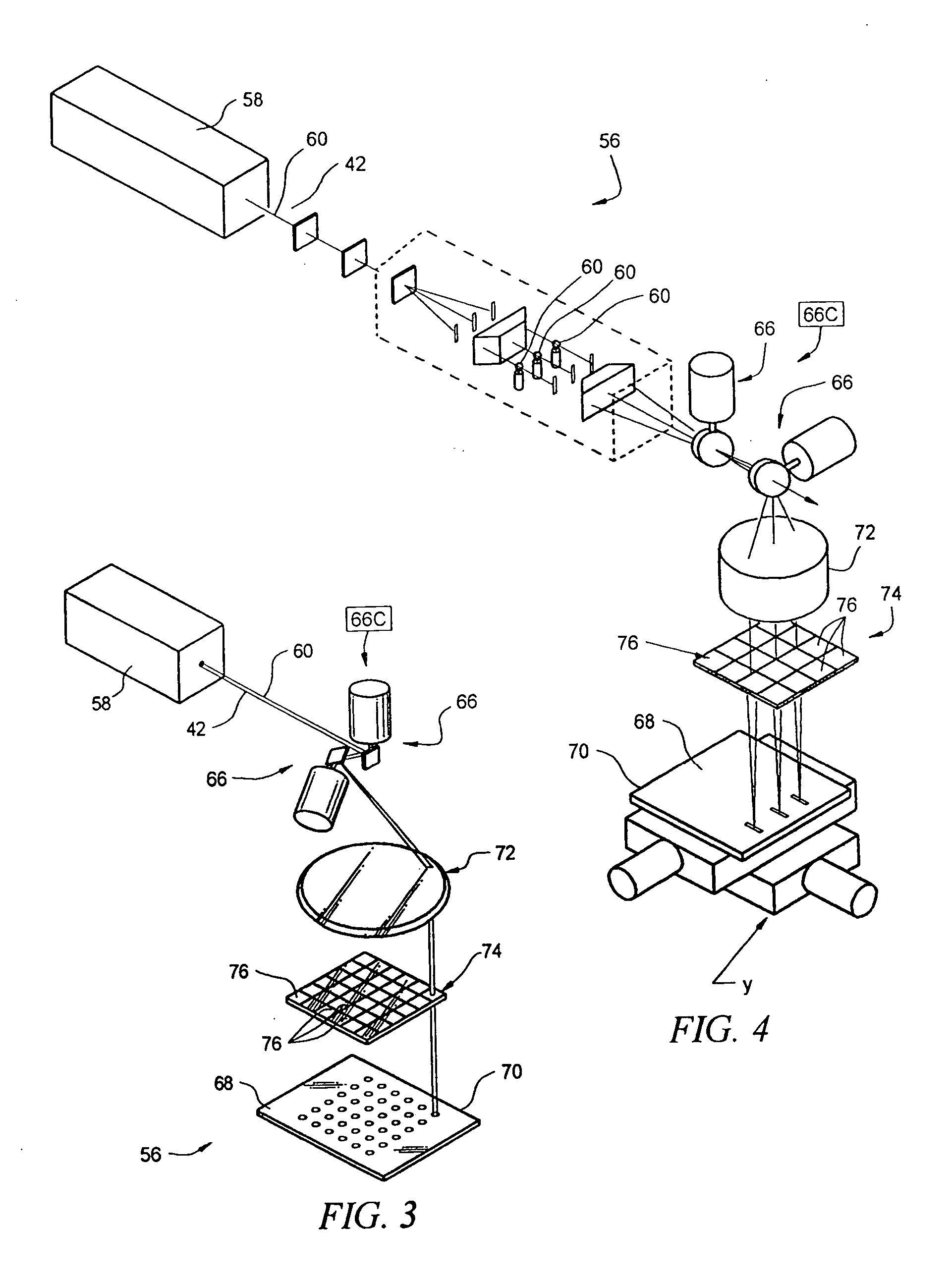Method and apparatus for cartridge identification imprinting in difficult contexts by recess protected indicia
a cartridge identification and recess protection technology, applied in the field of identification of firearms cartridges, can solve the problems of obscuring the ballistic finger print or scratching evidence on the bullet or cartridge case, being pseudo-repeatable and largely random in nature, and being unable to identify the cartridg
- Summary
- Abstract
- Description
- Claims
- Application Information
AI Technical Summary
Benefits of technology
Problems solved by technology
Method used
Image
Examples
Embodiment Construction
[0039] A. Introduction
[0040] The following will first discuss the elements and operation of a typical firearm, cartridge and bullet, by way of a general introduction to parts and operations of a firearm in imposing identifying indicia on bullets or cartridge cases and to establish common definitions and points of reference. The following will then provide an introduction to the methods and apparatus for embossing or imprinting identifying indicia by a firearm on a cartridge case or bullet, following by a discussion and description of a laser system for generating or providing, on a part of a firearm, the “micro-engraving” or “micro-stamping” tool or image necessary to emboss or stamp an identifying indicia or a cartridge case or bullet.
[0041] Given foundation descriptions of the technology involved in and related to the present invention, the following will then describe the present invention and presently preferred embodiments of the invention, including presently preferred forms...
PUM
 Login to View More
Login to View More Abstract
Description
Claims
Application Information
 Login to View More
Login to View More - R&D
- Intellectual Property
- Life Sciences
- Materials
- Tech Scout
- Unparalleled Data Quality
- Higher Quality Content
- 60% Fewer Hallucinations
Browse by: Latest US Patents, China's latest patents, Technical Efficacy Thesaurus, Application Domain, Technology Topic, Popular Technical Reports.
© 2025 PatSnap. All rights reserved.Legal|Privacy policy|Modern Slavery Act Transparency Statement|Sitemap|About US| Contact US: help@patsnap.com



